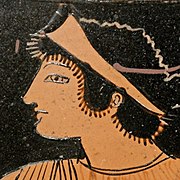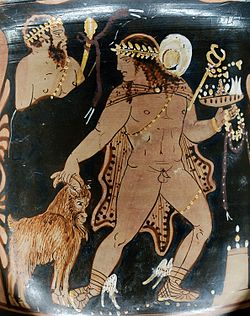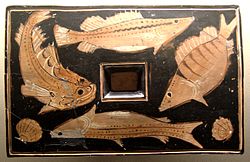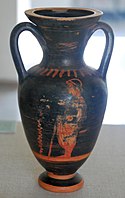Liste der griechischen Töpfer und Vasenmaler/P
Namentlich bekannte Künstler
| ||||||||||||||||||||||||||||||||||||||||||||||||||||||||||||||||||||||||||||||||||||||||||||||||||||||||||||||||||||||||||||||||||||||||||||||||||||||||||||||||||||||||||||||||||||||||||||||||||||||||||||||||||
Nicht namentlich bekannte Künstler (Notnamen)
| |||||||||||||||||||||||||||||||||||||||||||||||||||||||||||||||||||||||||||||||||||||||||||||||||||||||||||||||||||||||||||||||||||||||||||||||||||||||||||||||||||||||||||||||||||||||||||||||||||||||||||||||||||||||||||||||||||||||||||||||||||||||||||||||||||||||||||||||||||||||||||||||||||||||||||||||||||||||||||||||||||||||||||||||||||||||||||||||||||||||||||||||||||||||||||||||||||||||||||||||||||||||||||||||||||||||||||||||||||||||||||||||||||||||||||||||||||||||||||||||||||||||||||||||||||||||||||||||||||||||||||||||||||||||||||||||||||||||||||||||||||||||||||||||||||||||||||||||||||||||||||||||||||||||||||||||||||||||||||||||||||||||||||||||||||||||||||||||||||||||||||||||||||||||||||||||||||||||||||||||||||||||||||||||||||||||||||||||||||||||||||||||||||||||||||||||||||||||||||||||||||||||||||||||||||||||||||||||||||||||||||||||||||||||||||||||||||||||||||||||||||||||||||||||||||||||||||||||||||||
Künstler-Gruppen
| |||||||||||||||||||||||||||||||||||||||||||||||||||||||||||||||||||||||||||||||||||||||||||||||||||||||||||||||||||||||||||||||||||||||||||||||||||||||||||||||||||||||||||||||||||||||||||||||||||||||||||||||||||||||||||||||||||||||||||||||||||||||||||||||||||||||||||||||||||||||||||||||||||||||||||||||||||||||||||||||||||||||||||||||||||||||||||||||||||||||||||||||||||||||||||||||||||||||||||||||||||||||||||||||||||||||||||||||||||||||||||||||||||||||||||||||||||||||||||||||||||||||||||||||||||||||||||||||||||||||||||||||||||||||||||||||||||||||||||||||||||||||
Auf dieser Seite verwendete Medien
Autor/Urheber: ArchaiOptix, Lizenz: CC BY-SA 4.0
object type / vase shape: attic black figure lip-cup, foot alien
- description exterior A: Apotheosis of Herakles: Athena leading Herakles towards Zeus seated with sceptre; inscription: ΧΑΙΡΕ ΚΑΙ ΠΙΕΙ ΜΕ ΝΑΙΧΙ - B: Zeus with thunderbolt sitting on throne, Athena rising from his head, Hephaistos leaving - production place: Athens - potter: Phrynos (signed on B: ΦΡΥΝΟΣ ΕΠΟΙΕΣΕΝ ΧΑΙΡΕ ΜΕΝ) - painter: Phrynos Painter - period / date: ripe archaic, ca. 555-550 BC - material: pottery (clay) - preserved height: 9.4 cm - restored hight: 20.3 cm - diameter (without handles): 28.6 / 27.9 cm - findspot: Vulci - museum / inventory number: London, British Museum 1867,0508.962 / cat. vases B 424 - bibliography: John D. Beazley, Attic Black-Figure Vase-Painters, Oxford 1956, 168, 169.3 - https://www.britishmuseum.org/collection/object/G_1867-0508-962 - CVA London 2, plate 13.2 - Beazley Archive Pottery Database 301068
- Please note: The above museum permits photography of its exhibits for private, educational, scientific, non-commercial purposes. If you intend to use the photo for any commercial aim, please contact the museum and ask for permission.Autor/Urheber: ArchaiOptix, Lizenz: CC BY-SA 4.0
object type / vase shape: attic black figure lekythos
- description: Aineias escaping from Troy, carrying his father Anchises on his shoulders and leading his son Askanios, between 2 women - production place: Athens - painter: Phanyllis Painter - period / date: late archaic, ca. 520-480 BC - material: pottery (clay) - height: 31 cm - museum / inventory number: København, Ny Carlsberg Glyptotek 2658 - bibliography: CVA Copenhagen 1, plates 18.1-2 - Emilie Haspels, Attic Black-Figured Lekythoi, Ecole Française d'Athènes, Paris, 1936, 200.21 - Filippo Giudice, I pittori della classe di Phanyllis, Catania 1983, 60.45 - Beazley Archive Pottery Database 6544
- Please note: Some museums permit photography of their exhibits for private, educational, scientific, non-commercial purposes only. If you intend to use the photo for commercial aims, I would recommend you to contact the museum.Autor/Urheber:
Autor/Urheber: Picture taken by Marcus Cyron, Lizenz: CC BY-SA 3.0
Hochstieliger Kantharos des Virginia-Exhibition-Maler/der Polychromen Gruppe der apulisch-rotfigurigen Keramik; sitzende Frau; Ende 4. Jahrhundert v. Chr.; Antikensammlung Kiel, Inventarnummer B 583.
Autor/Urheber: , Lizenz: CC BY-SA 3.0
Dieses Bild zeigt ein Denkmal, das zum Kulturerbe Italiens gehört. Dieses Denkmal nimmt am Wettbewerb Wiki Loves Monuments Italia 2012 teil.
Bull and cow in a papyrus plantation. Amphoroid krater, Late Helladic III A2 (ca. 1300 BC). From Rhodes.
Autor/Urheber: , Lizenz: CC0
Greek, Attic; Bell-krater; Vases; Obverse, the ascension of Persephone from the underworld; Reverse, libation scene
Persephone, the daughter of the goddess Demeter, was condemned to spend half of each year with Hades, the ruler of the underworld. In this grandiose representation, Persephone ascends to earth through a rocky outcrop. She is guided by Hermes, the divine messenger, and Hekate, a goddess of fertility, magic, and dark things who typically carries torches. At the far right stands the regal Demeter, waiting to receive her daughter and the renewal of life that her return engendered.Musician supporting a drunken banqueter. Tondo from an Attic red-figure kylix, c. 510 BC.
Autor/Urheber: Providence Painter, Lizenz: CC BY 2.5
Woman holding a breastplace. Attic red-figure lekythos, 470–460 BC. From Gela.
Autor/Urheber: Μαρσύας, Lizenz: CC BY-SA 2.5
Red-figure vase (hydria, or kalpis) by the Group of Polygnotos, ca. 440–430 BC. Seated, Sappho is reading one of her poems to a group of three student-friends. National Archaeological Museum in Athens, 1260.
Spacer image
Autor/Urheber: Marcus Cyron, Lizenz: CC BY-SA 3.0
Apulisch-rotfiguriges Widderkopf-Rhython der Perrone-Phrixos-Gruppe; Darstellung zeigt eine auf einem Delphin reitende Nereide, rechts das Seeungeheuer Skylla; Dekor zeigt Eierstab unterhalb der Lippe und unter dem Bild; Malweise: Schwarzer Firnis, metallisch glänzend, nicht deckend, an vielen Stellen abgeplatzt. Vorzeichnungen. Zusatzfarbe: weiß (fast vollständig verloren). Gefäßinneres gefirnisst. 340/30 v. Chr.; Antikensammlung Kiel, Inventarnummer B 895.
Urteil des Paris. A-Seite einer etruskischen schwarzfigurigen Amphora, um 530 v. Chr.
Autor/Urheber: , Lizenz: CC0
Sacrifice scene. Attic red-figure krater, ca. 430 BC–420 BC. Found in Athens.
Thetis's face, detail from a scene representing Thetis raped by Peleus. Side A from an Attic red-figure pelike, ca. 510 BC–500 BC.
Autor/Urheber: Picture: Marcus Cyron, Lizenz: CC BY-SA 3.0
Da ich derzeit nicht dazu komme, all meinen Bildbestand angemessen aufzubereiten, andererseits aber das material nicht sinnlos auf dem PC verkommen lassen will, habe ich mich entschlossen es mitsamt eventueller Begleittexte (die dann gelöscht werden sollten) quasi als Rohmaterial hochzuladen. Jeder ist herzlich eingeladen, Beschreibungen hinzuzufügen, Titel zu verbessern, Kategorisieren etc.
Scenes of pederastic courtship. Tondo from an Attic red-figure kylix.
Autor/Urheber: Group of the Hoplite-Leaving-Home, Phanyllis Group, Lizenz: CC BY 2.5
Warrior running between draped figures with spears (hoplitodromia?). Attic black-figure lekythos, ca. 520 BC.
Autor/Urheber: ArchaiOptix, Lizenz: CC BY-SA 4.0
object type / vase shape: attic black figure lekanis
- description interior: 2 confronted horse protomai - exterior: animal frieze: panthers, siren, lion, rams ... - production place: Athens - painter: Panther Painter - period / date: early archaic, ca. 600-570 BC - material: pottery (clay) - findspot: Vari - museum / inventory number: Athens, National Archaeological Museum 16361 - bibliography: John D. Beazley, Para 11.7 - Beazley Archive Pottery Database 350038
- Please note: Some museums permit photography of their exhibits for private, educational, scientific, non-commercial purposes only. If you intend to use the photo for commercial aims, I would recommend you to contact the museum.Krieger. A-Seite von einer attisch-schwarzfigurigen Amphora, 570-565 v. Chr.
Autor/Urheber: Sailko, Lizenz: CC BY 3.0
Greek antiquities in the Cleveland Museum of Art
Komos scene. Side B from an Attic black-figure amphora, ca. 550-540 BC.
Herakles and the centaur Nessos. Side A of a Lucanian red-figure nestoris, ca. 360-350 BC.
Autor/Urheber: Group of Palermo 16 (name piece), Lizenz: CC BY 2.5
Naked and beardless Heracles. Attic red-figure lekythos, 450–400 BC. From Gela.
(c) Napoleon Vier, CC BY-SA 3.0
Autor/Urheber:
Squat lekythos. Sphinx abducting a youth. From Athens. By Polion. About 420 BC.
Seated Dionysos holding out a kantharos. Interior from an Attic black-figured plate, ca. 520-500 BC. From Vulci.
Hermes Psykhopompos: gesetzt auf einem Felsen, der Gott schickt sich an, eine verstorbene Seele im Unterwelt zu führen. Attisch weißgrundige Lekythos, um 450 v. Chr.
Autor/Urheber: Picture taken by Marcus Cyron, Lizenz: CC BY-SA 3.0
Da ich derzeit nicht dazu komme, all meinen Bildbestand angemessen aufzubereiten, andererseits aber das material nicht sinnlos auf dem PC verkommen lassen will, habe ich mich entschlossen es mitsamt eventueller Begleittexte (die dann gelöscht werden sollten) quasi als Rohmaterial hochzuladen. Jeder ist herzlich eingeladen, Beschreibungen hinzuzufügen, Titel zu verbessern, Kategorisieren etc.
Apulian red-figured fish plate ca. 350–325 BC.
Autor/Urheber: Marcus Cyron, Lizenz: CC BY-SA 3.0
Attisch-rotfigurige Pelike des Perseus-Malers, Herme auf dessen überdimensionalen Phallos ein Vogel sitzt, Höhe 20 cm, gefunden in Etrurien, Inventar-Nr. 2172, Antikensammlung Berlin/Altes Museum
Autor/Urheber: ArchaiOptix, Lizenz: CC BY-SA 4.0
object type / vase shape: attic black figure small belly-amphora
- description A = B: panther - production place: Athens - painter: Painter of the Panther Amphoriskoi - period / date: high archaic, ca. 575-550 BC - material: pottery (clay) - findspot: Ialysos - museum / inventory number: Rhodos, Archaeological Museum 10599 - bibliography: John D. Beazley, Attic Black-Figure Vase-Painters, Oxford 1956, 93.2 - CVA Rhodos 1, plates 3.3, 4.1 - Beazley Archive Pottery Database 300860
- Please note: Some museums permit photography of their exhibits for private, educational, scientific, non-commercial purposes only. If you intend to use the photo for commercial aims, I would recommend you to contact the museum.Autor/Urheber: , Lizenz: CC0
Autor/Urheber: Marcus Cyron, Lizenz: CC BY-SA 3.0
Fragmente einer attisch-rotfigurigen Kylix der Proto-Panaitische Gruppe mit der Darstellung eines Jugendlichen und einer Frau beim Geschlechtsakt sowie eines weiteren Mannes und einer weiteren Frau. Ende 6. Jh. 1976 für die Antikensammlung Berlin/Altes Musem erworben, Inventarnummer 1976.5.
Autor/Urheber: Raq, Lizenz: CC BY-SA 3.0
Attic black-figure kylix. Author: Phrynos Painter; about 560/550 BC; Museo del vino Torgiano
Apotheose des Herakles. Apulischer rotfiguriger Teller, um 340 v. Chr.
Raub von Marpessa: Apoll (links, mit Artemis) und Idas (recht, mit Marpessa) werden durch Zeus getrennt. Attischer rotfiguriger Psykter, um 480 v. Chr. Aus Agrigento.
Heracles in the Hesperides garden. Side A from an Attic red-figure pelike, 380–370 BC. From Cyrenaica.
Attic white-ground black-figure alabastron, ca. 540 BC.
Autor/Urheber: Picture taken by Marcus Cyron, Lizenz: CC BY-SA 3.0
Da ich derzeit nicht dazu komme, all meinen Bildbestand angemessen aufzubereiten, andererseits aber das material nicht sinnlos auf dem PC verkommen lassen will, habe ich mich entschlossen es mitsamt eventueller Begleittexte (die dann gelöscht werden sollten) quasi als Rohmaterial hochzuladen. Jeder ist herzlich eingeladen, Beschreibungen hinzuzufügen, Titel zu verbessern, Kategorisieren etc.
Gigantomachy scene: Poseidon fighting Polybotes. Tondo of an Attic red-figure kylix, ca. 475-470 BC. Found in Vulci, Etruria.
Silenus and maenad. Tondo of an Attic red-figure kylix, 460–450 BC.
Autor/Urheber: Haimon-Maler , Lizenz: CC0
Autor/Urheber: Princeton-Maler , Lizenz: CC0
Autor/Urheber: Carole Raddato from FRANKFURT, Germany, Lizenz: CC BY-SA 2.0
The outside of this drinking cup depicts scenes of courting couples, both homosexual and heterosexual. In the ancient world amorous relationships between men and boys were allowed, although governed by strict social conventions. Sporting equipment in the background hints to the palestra and the attractiveness of a fit, youthful body.
Autor/Urheber: Zde, Lizenz: CC BY-SA 4.0
Amphora with snakes in relief. On the neck two riders with reins and whip, a bird clutching a snake in its beak. On body procession of riders and foot soldiers. Games to commemorate the heroised dead? Philadelphia painter, late 8 century BC. Prague UkA 60-16.
Autor/Urheber: Painter of Palermo 4, Lizenz: CC BY 2.5
Nike with a spear and a greave. Attic red-figure lekythos, 470–460 BC. From Gela.
Autor/Urheber: Picture: Marcus Cyron, Lizenz: CC BY-SA 3.0
Da ich derzeit nicht dazu komme, all meinen Bildbestand angemessen aufzubereiten, andererseits aber das material nicht sinnlos auf dem PC verkommen lassen will, habe ich mich entschlossen es mitsamt eventueller Begleittexte (die dann gelöscht werden sollten) quasi als Rohmaterial hochzuladen. Jeder ist herzlich eingeladen, Beschreibungen hinzuzufügen, Titel zu verbessern, Kategorisieren etc.
Gigantomachie (Athena und Enkelados)? Schwarzfigurige attische Amphore, um 520 v. Chr. Aus Vulci.
Autor/Urheber: Picture taken by Marcus Cyron, Lizenz: CC BY-SA 3.0
Augenschale. Würzburg, Martin-von-Wagner-Museum L 467. Töpfer: Hischylos, Maler: Pheidippos. ARV² 165 Nr. 2
Autor/Urheber: Fingalo, Lizenz: CC BY-SA 2.0 de
Apollo und sein Rabe. Innerseite von einer attischen weißgrundigen Kylix, Pistoxenos-Maler (andere Zuschreibungen gehen an den Berliner Maler und an Onesimos), ca. 460 v. Chr. Aus einem Grab in Delphi. Dm. 18 cm. Museum von Delphi, Inv. 8140, Saal XII.
Exhibit in the Martin von Wagner Museum - Würzburg, Germany.
Autor/Urheber: Picture: Marcus Cyron, Lizenz: CC BY-SA 3.0
Da ich derzeit nicht dazu komme, all meinen Bildbestand angemessen aufzubereiten, andererseits aber das material nicht sinnlos auf dem PC verkommen lassen will, habe ich mich entschlossen es mitsamt eventueller Begleittexte (die dann gelöscht werden sollten) quasi als Rohmaterial hochzuladen. Jeder ist herzlich eingeladen, Beschreibungen hinzuzufügen, Titel zu verbessern, Kategorisieren etc.
Chalcidian black-figure eye-cup, ca. 530 BC. From Reggio di Calabria (former Rhegion).
Bathing girls. Attic black-figure amphora attributed to the Priam Painter, last quarter of 6th century BC. From Monte Abetone (Etruria). National Etruscan Museum of Villa Giulia (Rome), Inv. 106463.
Autor/Urheber: Marcus Cyron, Lizenz: CC BY-SA 3.0
Apulisch-rotfiguriger Kantharos der Paidagogos-Gruppe mit der Darstellung eines Eros auf einem Reh. Um 350/40 v. Chr. Antikensammlung Kiel, Inventarnummer B 563.
Autor/Urheber: Zde, Lizenz: CC BY-SA 4.0
Attic black figure amphora, Pasikles Painter, around 500 BC. Side A: Heracles struggling agains Triton with Athena. Archaeological Museum of Syracuse.
Autor/Urheber: Picture taken by Marcus Cyron, Lizenz: CC BY-SA 3.0
Antikensammlung Kykladenmuseum.
Musikstunde: Lehrer (rechts, Inschrift:
ΣΜΙΚΥΔΟΣ) und sein Schüler (links, ΕΥΔΥΜΙΔΕΣ). Zwischen ihnen berichtet ein Junge (ΤΛΕΜΠΟΜΕΝΟΣ) einen Text. Attischer rotfiguriger Hydria, um
510 v. Chr. Aus Vulci.Autor/Urheber: Picture taken by Marcus Cyron, Lizenz: CC BY-SA 3.0
Attischer Skyphos
Der heimkehrende Odysseus tötet die Freier seiner Frau Penelope Vorderseite mit Odysseus, der mit seinem Bogen auf die auf der Rückseite dargestellten Freier schießt, daneben zwei Mägde
Penelope-Maler, zugeschrieben, Maler 3. Viertel 5. Jh.v.Chr. Genauer: um 440 v.Chr. Fundort: Tarquinia (Italien)
Ton, rotfigurig Höhe: 20 cm Durchmesser: 23 cm Antikensammlung Berlin 1876 erworben Ident.Nr. F 2588ausgestellt im Alten Museum
Autor/Urheber: , Lizenz: CC0
Autor/Urheber: Picture taken by Marcus Cyron, Lizenz: CC BY-SA 3.0
Pseudo-etruskisch-rotfigurige Amphora;der Praxias-Gruppe mit ihrer Werkstatt in Vulci zugeschrieben;auf beiden Seite je ein Manteljüngling; um 480/50 v. Chr.; frühere Sammlung Feoli, heute in der Antikensammlung Würzburg, Inventarnummer L 806.
Autor/Urheber: Painter of Palermo 6, Lizenz: CC BY 2.5
Woman holding a sakkos (rough cloth); kalathos (basket). Attic red-figure lekythos, middle 5th century BC. From Gela.
Sirens. Attic black-figure lekane.
Autor/Urheber: , Lizenz: CC0
Greek, Corinthian; Alabastron; Vases; Winged Artemis holding two swans
As one of her aspects, the goddess Artemis was mistress of animals, potnia theron. In Archaic representations from all parts of Greece, she appears with her hands firmly gripping a pair of lions, deer, or other animals or birds.Dionysos (sitting left, at the end of the couch) and Ploutos (sitting right, holding a cornucopia) surrounded by satyrs and maenads. A satyr is helping and supporting a drunken Hephaistos with his hammer (right). Eros plays with a goose at the bottom. Attic red-figured krater, ca. 370–360 BC. Said to be from S. Agata dei Goti (Campania).
Autor/Urheber: Picture taken by Marcus Cyron, Lizenz: CC BY-SA 3.0
Middle corinthian Amphoriskoi depicting a lion preparing to attack a goat on one, a bird on the other side; Painter of the Palermo Amphoriskoi, ca. 575 B.C.; Museum of Cyclydic Art Athens Ch. Politis Collection 147.
This red-figure kylix depicts a wreathed symposiast in the tondo. He bends over to the right looking into a cup which he holds delicately by the foot in his right hand; the end of his beard disappears into the vessel. In the left he holds an oinochoe which rests on the ground.
The pose of the figure is innovative, and although komasts are frequently depicted in the tondo of archaic Attic red-figure cups, none share this pose.
This is the only vase signed by Paidikos as painter.Theseus und der Minotauros. Attischer rotfiguriger Teller, 520-510 v. Chr.
Autor/Urheber: , Lizenz: CC0
Apollo piercing with his arrows Tityos, who has tried to rape his mother Leto. Side A from an Attic red-figured pelike, ca. 450–440 BC.





























































































































































